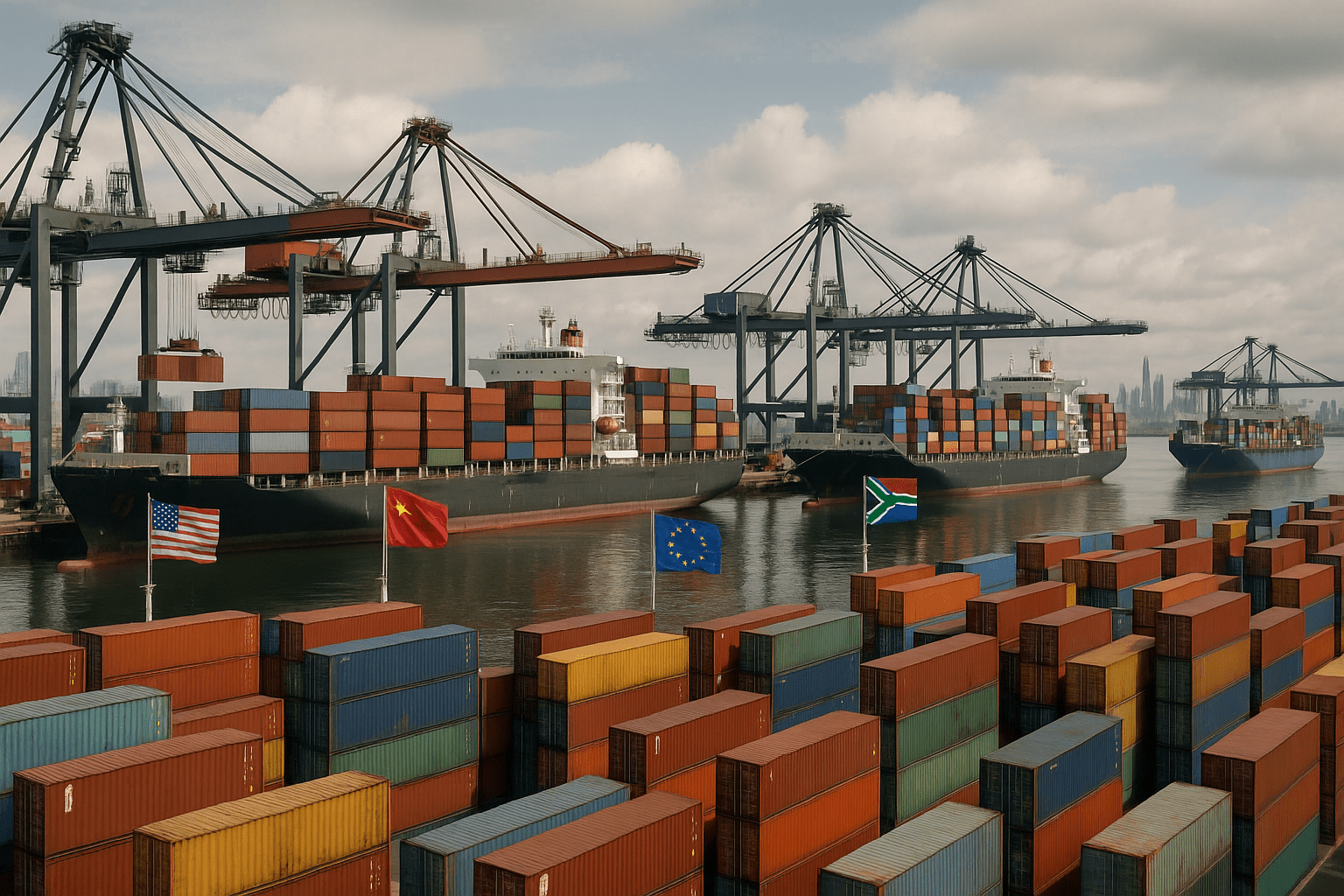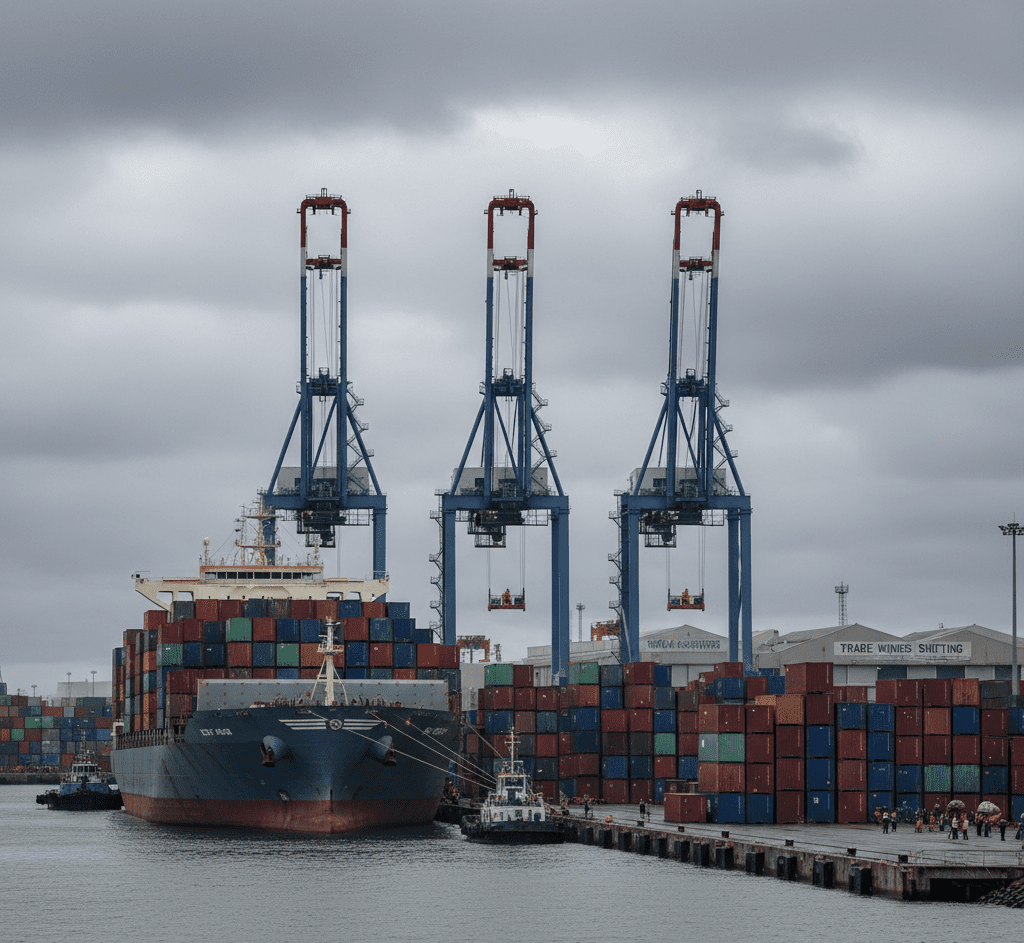U.S. Tariffs Impact on Global Economy: Ripples Felt Far and Wide

U.S. Tariffs Impact on Global Economy: Ripples Felt Far and Wide
In recent years, the United States has leaned heavily on aggressive tariff policy as a tool of trade diplomacy and economic positioning. While tariffs may deliver short-term protection to targeted sectors, their broader consequences cascade across global supply chains, economies, and even the prosperity of middle-income nations like South Africa. This article explores those outcomes in depth—both for the U.S. and globally—and zooms in on what South Africa stands to gain or lose from these tariffs, particularly in the context of changing tariffs.
Tariffs: A Double-Edged Sword
Understanding the implications of tariffs is crucial for businesses and consumers alike, as these tariffs can significantly influence market dynamics.
At its core, a tariff is a tax on imports. But unlike a neutral tax, it intentionally alters price signals in the market. When the U.S. imposes tariffs broadly:
- Import prices rise, shifting demand toward domestic products or non-tariffed suppliers
- Exporters to the U.S. face a more hostile market
- A wave of retaliation is often triggered in response
Press analyses and trade models show that while some domestic industries may temporarily benefit, the aggregate effects tend to be negative. PIIE+3Deloitte Brazil+3McKinsey & Company+3
To illustrate: tariffs on intermediate goods (components or inputs) don’t just raise the cost of finished imports—they seep into the entire domestic value chain. Over time, such cost pressures filter through to all sectors. Deloitte Brazil+1
What Happens to the U.S. Economy?
Short-Term Gains, But At a Price
Protection for specific sectors: Industries such as steel, aluminum, or certain agri-exports may see demand shift in their favor. But these gains are often narrow and uneven across the economy.
Higher government revenue: In 2025, projections suggest the tariffs will raise ~US$171.3 billion (0.56 % of GDP) in tariff revenues. taxfoundation.org
However, these gains mask deeper issues.
Longer Term Drag on Growth, Employment & Income
A number of modeling studies converge on a pessimistic outlook if tariffs persist:
- The Yale Budget Lab estimates that U.S. real GDP will be ~0.41 % smaller in the long run under sustained tariffs. The Budget Lab at Yale
- Under the full suite of 2025 tariffs and retaliation, U.S. GDP could be down ~0.6 % persistently, with exports shrinking ~18 %. The Budget Lab at Yale+1
- Labor markets suffer: unemployment is projected to be 0.3–0.7 percentage points higher; payroll employment could be ~505,000 jobs lower by end-2025. The Budget Lab at Yale
- The Wharton/PolicyWise model projects a long-run GDP contraction of ~6 % and wage loss of ~5 % for the average household. Penn Wharton Budget Model
Put simply: the “protected” sectors gain modestly, but many others contract, dragging down overall growth.
Inflation & Consumer Burden
Because tariffs are effectively a tax on imports, businesses often pass these costs onto consumers. Deloitte Brazil+2PIIE+2
In updated forecasts, these tariffs raise inflation by about 1 full percentage point above baseline in 2025. PIIE The U.S. Federal Reserve may respond by hiking interest rates, which could choke off investment and lending. PIIE+1
Notably, the burden is regressive: lower-income households absorb a larger share of the tariff burden proportionally. In 2025, the bottom decile faces cost increases 3x that of the top decile. The Budget Lab at Yale+1
Supply Chain Disruptions & Investment Risk
Tariffs disturb supply chains. Companies reliant on imported parts face higher costs or forced re-sourcing, often at suboptimal alternatives. richmondfed.org+2McKinsey & Company+2
In sectors like semiconductors, which are highly globalised, this becomes a major risk. Tariff pressure forces firms to decide whether to absorb costs or pass them to end users, while supply chain decisions (where to produce, ship) become fraught. McKinsey & Company+2McKinsey & Company+2
Moreover, uncertainty saps business confidence—capital is withheld, expansions delayed. McKinsey & Company+2PIIE+2
Retaliation & Blowback
Other countries hit by U.S. tariffs often respond with their own tariffs or trade measures. This retaliation weakens U.S. exports, further damaging vulnerable sectors like agriculture or machinery. McKinsey & Company+3PIIE+3PIIE+3
A worst-case scenario: a full-fledged trade war, where tit-for-tat tariffs spiral, making trade flows more volatile and unpredictable.
Global Economy: The Collateral Damage
No nation operates in isolation. The ripple effects of U.S. tariffs are felt worldwide.
Slower Global Growth & Trade Compression
- In a broad tariff scenario, global GDP is projected to decline by 0.8 % relative to baseline. federalreserve.gov
- Trade flows could shrink by 5.5 % to 8.5 % relative to the “pre-shock” baseline, especially in sectors deeply integrated in global value chains (GVCs). cepr.org
- Even models that consider only direct trade effects suggest a global growth hit of ~0.2 to 0.5 percentage points. bbvaresearch.com
Further, OECD has already trimmed global growth expectations to 2.9 % for 2025/2026 on the back of U.S. tariff pressures. Reuters
Rising Inflation & Cost Pressures Abroad
Because trade is global, many countries import U.S. goods, inputs, or face knock-on cost increases. Inflationary pressure spills over. PIIE+2PIIE+2
For export-dependent economies, the higher U.S. cost base also means lower demand for their goods, weakening terms of trade.
Shifting Trade Blocs & Realignments
Tariffs encourage trade diversion. Countries banned by U.S. tariffs will look for other markets; importers in the U.S. will pivot to alternative suppliers. This can reconfigure trade alliances.
We’re already seeing hints of this “bloc effect”, particularly among countries seeking regional or multilateral trade arrangements. PIIE+2PIIE+2
Countries excluded or disadvantaged by U.S. policy may band together in trade blocs that bypass the U.S.
Developing Economies: Vulnerable to Blowback
Many emerging and commodity exporting nations are particularly exposed. They rely on open trade and predictable demand from big markets—including the U.S.
Tariff-driven global slowdown reduces demand for raw materials, agricultural exports, and capital flows. Currency depreciation, lower investment, and social stress can follow.
In short: countries that depend on exports, foreign finance, or global value chains are at increased risk.
Spotlight: South Africa & U.S. Tariffs
Let’s bring this home to South Africa. What’s at stake?
Trade Gains (if Opportunistic) & the Limits
If the U.S. imposes steep tariffs on major exporting nations (e.g. China, EU), South Africa may be able to fill some gaps. For example, South African minerals, metals, and agricultural products might become marginally more attractive to U.S. buyers—if not blocked by tariffs or quality rules.
However, this upside is modest and heavily dependent on:
- Whether South Africa retains tariff-free or preferential access, such as under AGOA
- The capacity of South African firms to scale production quickly
- Logistics, quality, and trade compliance
Without preservation of preferential status, even this opportunity is fragile.
Risk to AGOA & Market Access
One of the most severe risks: the U.S. may revise or retract preferential access provisions like AGOA. If South Africa loses or has its benefits rolled back, many exported goods (textiles, agriculture, processed goods) would become less competitive in the U.S.—or simply face exclusion.
This could cause:
- Declining exports
- Job loss in export-dependent sectors
- Decline in foreign exchange earnings
Indirect Impact via Global Slowdown
Because South Africa is embedded in global commodity markets, a U.S.-induced contraction in world growth diminishes demand for exports like platinum, coal, iron ore, and agricultural products.
Lower export prices and volumes directly erode South Africa’s fiscal revenue and current account balance.
Pressure on Imports & Input Costs
South African industries that import machinery, technology, or intermediate goods from the U.S. (or via U.S.-linked supply chains) may face higher costs or supply risks. This raises production costs domestically and squeezes margins.
Firms may try to substitute from other regions (Asia, Europe), but that often comes with tradeoffs in cost or quality.
Incentive for African Integration
A silver lining: the turbulence of U.S. trade policy could accelerate South Africa’s pivot toward intra-African trade, leveraging the African Continental Free Trade Area (AfCFTA). By strengthening African value chains, South Africa may reduce its vulnerability to external tariff shocks.
A Fragile Balance
Tariffs are a tempting tool for governments seeking short-term advantage or negotiating leverage. But as the evidence mounts, their downsides far outweigh the narrow lifts to specific sectors.
- In the U.S., tariffs raise inflation, lower overall growth, destroy jobs in unprotected sectors, and weaken supply chains.
- Globally, they contract trade, reduce GDP, and ripple into vulnerable economies.
- For South Africa, the stakes hinge on preserving market access (e.g. via AGOA), navigating cost pressures, and accelerating African integration.
In the long run, the US tariffs impact on global economy may amount to a drag on prosperity, confidence, and growth. The smart play for trade-dependent nations is to diversify, build regional resilience, and avoid overreliance on policy trends in large economies.



